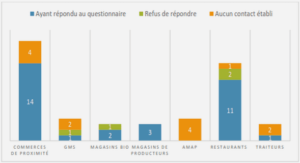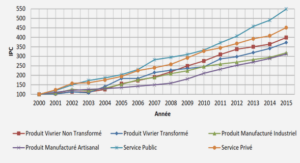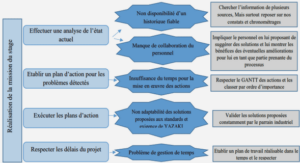SHEAR STRENGTHENING OF RC BEAMS WITH EB FRP INFLUENCING
SHEAR STRENGTHENING OF RC BEAMS WITH EXTERNALLY BONDED FRP COMPOSITES: EFFECT OF STRIP-WIDTH TO STRIPSPACING RATIO
Department of Construction Engineering, École de Technologie Supérieure 1100 NotreDame Ouest, Montréal, Québec, Canada H3C 1K3 Article Published in Journal of Composites for Construction, American Society of Civil Engineering (ASCE), Volume 15, No. 5, pp. 732-742, 2011.
Abstract
This paper presents the results of an experimental and analytical investigation of shear strengthening of reinforced concrete (RC) beams with externally bonded (EB) fibrereinforced polymer (FRP) strips and sheets, with emphasis on the effect of the strip-width to strip-spacing ratio on the contribution of FRP (Vf). In all, 14 tests were performed on 4520- mm-long T-beams. RC beams strengthened in shear using carbon FRP (CFRP) strips with different width-to-spacing ratios were considered, and their performance was investigated. In addition, these results are also compared with those obtained for RC beams strengthened with various numbers of layers of continuous CFRP sheet. Moreover, various existing equations which express the effect of FRP-strip width and concrete-member width and which have been proposed based on single or double FRP-to-concrete direct pull-out tests are checked for RC beams strengthened in shear with CFRP strips. The objectives of this study are to investigate: 1) the effectiveness of EB discontinuous FRP sheets (FRP strips) compared with that of EB continuous FRP sheets; 2) the optimum strip-width to strip-spacing ratio for FRP 104 (i.e., the optimum FRP rigidity); 3) the effect of FRP strip location with respect to internal transverse-steel location; 4) the effect of FRP strip width; and 5) the effect of internal transverse-steel reinforcement on the CFRP shear contribution.
Introduction and background
Significant interest has been shown in the use of externally bonded (EB) fibre-reinforced polymer (FRP) sheets and laminates for strengthening and repair of existing reinforced concrete (RC) beams and slabs, especially for bridges and buildings. Because of its intricacy, shear strengthening of RC beams with FRP is somewhat less well documented than FRP strengthening of beams in flexure and of columns (Bousselham and Chaallal 2004). Research studies carried out during the last decade have provided valuable outcomes, especially concerning the effect of FRP axial rigidity on the shear-strength enhancement of RC beams (Triantafillou 1998; Khalifa et al. 1998). On the basis of these research studies, many codes and design guidelines (hereafter called “the guidelines”) for RC structures strengthened with EB FRP have been published worldwide However, in a statistical comparison with available experimental results, Lima and Barros (2007) have revealed that some of the guideline equations (ACI 440 and CNR-DT200) lead to unduly conservative designs which use quantities of FRP materials well in excess of what is required. Efficient and accurate FRP strengthening design equations will greatly benefit the economic aspects of FRP strengthening projects.
Based on available experimental data, Triantafillou (1998) discovered that FRP effective strain decreases as FRP rigidity increases. Khalifa and Nanni (2000) realized that increasing the amount of CFRP may not always result in a proportional increase in shear resistance. They noted the existence of an FRP quantity threshold beyond which further strengthening effectiveness is questionable. In addition, their experimental tests showed that CFRP strips can outperform continuous CFRP sheets. Other experimental tests by Khalifa and Nanni (2002) and Zhang and Hsu (2005) confirmed these observations. Unlike shear-strengthening methods which use FRP continuous sheets, with discontinuous FRP sheets the quantity of FRP present varies with the strip-width to strip-spacing ratio (wf / sf). The FRP rigidity parameter (Rf) can be used to quantify the amount of FRP used with respect to the FRP-strip-width to FRP-strip-spacing ratio. The FRP rigidity parameter can be expressed as a function of (wf /sf) as follows: In the calculation of FRP rigidity, the only variable is the FRP-strip-width to FRP-stripspacing ratio (assuming that the FRP sheet characteristics and the RC beam cross-sectional dimensions are constants). Based on the authors’ updated database which encompasses the test results available in the literature up to 2010 on RC beams strengthened with FRP strips (see Bousselham and Chaallal (2004) for the original database), the relationship of FRP rigidity and shear-capacity increase has been investigated and is presented in Figure 5.1. It can be seen that increasing the FRP rigidity (i.e. the FRP-strip-width to FRP-strip-spacing ratio) does not necessarily lead to a gain in shear resistance. This result is in agreement with previous findings by Triantafillou (1998) and Khalifa and Nanni (2000).
In most current design models, the FRP contribution to shear resistance is assumed to be linearly related to FRP rigidity (or wf / sf). Clearly, this assumption is not in agreement with Figure 5.1 of the current research study, nor with the results of previous research studies (Triantafillou 1998; Khalifa and Nanni 2000). Therefore, to enhance current design guidelines, further consideration of the effect of the wf / sf ratio (i.e., FRP rigidity) seems reasonable. FRP-to-concrete direct pull-out tests (e.g., Bizindavyi and Neale 1999, Brosens and Van Gemert 1999) have demonstrated that the width of the FRP sheets, bf, and the width of the concrete block, bc, have a significant effect on the maximum bond strength of the FRP. Kamel et al. (2000) observed that the maximum load per unit width of the FRP strip can be significantly reduced in wide FRP sheets because of strain concentrations at the edges. To express this phenomenon, Holzenkämpfer (1994) introduced the term kf for steel plates bonded to concrete blocks, as follows:
Using a regression analysis of available experimental results, Chen and Teng (2001) extended the effect of FRP-plate width and concrete-block width to the effect of the FRPstrip-width to FRP-strip spacing ratio for RC beams strengthened in shear. The role of kf in the FRP shear contribution is also described by the authors. In their equation, bf is replaced by wf and bc by sf, yielding:The objectives of this research study are: (i) to study the effectiveness of CFRP strips compared with that of CFRP sheets for shear strengthening of RC beams; (ii) to test the applicability of available equations for the effect of strip width and concrete-block width on FRP sheets applied to concrete-block joints in RC beams strengthened in shear with different strip-width to strip-spacing ratios; (iii) to investigate the performance of RC beams strengthened in shear with EB CFRP composites, in terms of the CFRP and the transversesteel reinforcement ratios; and (iv) to check the effect of certain details such as CFRP strip location or CFRP strip width on improving the efficiency and performance of the strengthening system.
|
Table des matières
INTRODUCTION
CHAPTER 1 RESEARCH FOCUS AND OBJECTIVES
1.1 Problem definition
1.2 Scope of work and objectives
1.3 Research significance
1.4 Outline of thesis
CHAPTER 2 BACKGROUND AND LITERATURE REVIEW
2.1 Utilization of FRP sheets and rods in shear strengthening of reinforced-concrete (RC) beams
2.2 Externally-bonded (EB) FRP sheets strengthening method
2.3 End-anchorage systems for EB FRP sheet method
2.4 Near-surface mounted (NSM) FRP rod strengthening method
2.5 Embedded through-section (ETS) FRP rod strengthening method
CHAPTER 3 SHEAR STRENGTHENING OF RC BEAMS WITH EB FRP INFLUENCING FACTORS AND CONCEPTUAL DEBONDING MODEL
3.1 Abstract
3.2 Introduction
3.3 Contribution of EB FRP to shear resistance
3.4 Current design guideline provisions
3.4.1 CAN/CSA-S806 2002
3.4.2 fib-TG 9.3 2001
3.4.3 ACI 440.2R 2008
3.4.4 CAN/CSA-S6 2006
3.4.5 CNR-DT200 2004
3.4.6 HB 305-2008
3.5 Factors influencing FRP debonding in shear
3.5.2 Effective strain
3.5.3 FRP effective anchorage length
3.5.4 FRP effective width
3.5.5 Strip-width to spacing ratio
3.5.6 Cracking angle
3.5.7 Cracking pattern
3.5.8 Transverse steel
3.6 Proposed conceptual model
3.7 Validation of the design proposal
3.8 Conclusions References
CHAPTER 4 EMBEDDED THROUGH-SECTION FRP ROD METHOD FOR SHEAR STRENGTHENING OF RC BEAMS: PERFORMANCE AND COMPARISON WITH EXISTING TECHNIQUES
4.1 Abstract
4.2 Introduction
4.3 Research significance
4.4 Test program
4.4.1 Description of specimens
4.4.2 Materials
4.4.3 Test setup and procedure
4.4.4 Strengthening systems
4.5 Presentation of results
4.5.1 Overall response
4.5.2 Presentation of results by series
4.5.3 Deflection response
4.5.4 Strain response
4.6 Discussion of results
4.5.1 Efficiency of the ETS method
4.7 Conclusions
4.8 References
CHAPTER 5 SHEAR STRENGTHENING OF RC BEAMS WITH EXTERNALLY BONDED FRP COMPOSITES:EFFECTOFSTRIP-WIDTHTOSTRIP-SPACING RATIO
5.1 Abstract
5.2 Introduction and background
5.3 Description of the Experimental Program
5.3.1 Test specimens
5.3.2 Experimental procedure
5.4 Analysis of results
5.4.1 Overall response
5.4.2 Cracking and failure mode
5.4.3 CFRP strains
5.4.4 Transverse steel strains
5.5 Discussion and Analysis of Experimental Results
5.5.1 Efficiency of strengthening systems
5.5.2 Effect of CFRP strip width (for constant wf /sf)
5.5.3 Effect of the presence of internal transverse steel
5.5.4 Effect of CFRP strip location with respect to steel stirrup location
5.5.5 Discontinuous CFRP strips versus continuous CFRP sheets
5.5.6 Effect of strip-width to strip-spacing ratio
5.6 Comparison of test results with shear design equations
5.7 Conclusions
5.8 References
CHAPTER 6 PERFORMANCE OF END-ANCHORAGE SYSTEMS FOR RC BEAMS STRENGTHENED IN SHEAR WITH EPOXY-BONDED FRP
6.1 Abstract
6.2 Introduction
6.3 Test program
6.3.1 Description of specimens
6.3.2 Materials
6.3.3 Test setup and procedures
6.3.4 Strengthening systems
6.4 Presentation of results
6.4.1 Overall response
6.4.2 Failure modes
6.4.3 Deflection response
6.4.4 Strain response
6.5 Discussion of results
6.5.1 Efficiency of the end-anchorage systems
6.5.2 Anchorage factor
6.6 Conclusions
6.7 References
CHAPTER 7 EXPERIMENTAL TESTS AND DESIGN MODEL FOR RC BEAMS STRENGTHENED IN SHEAR USING THE EMBEDDED THROUGH SECTION FRP METHOD
7.1 Abstract
7.2 Introduction
7.3 Experimental program
7.3.1 Description of specimens
7.3.2 Materials
7.3.3 Test setup and procedure
7.3.4 Instrumentation
7.4 Discussion of experimental results
7.4.1 Overall response
7.4.2 Cracking and failure mode
7.4.3 CFRP strain
7.4.4 Transverse steel strain
7.5 Effect of experimental parameters
7.5.1 Effect of CFRP rod surface coating
7.5.2 Effect of internal transverse-steel
7.5.3 Effect of CFRP rod spacing
7.5.4 Effect of CFRP rod diameter
7.5.5 Effect of the FRP rigidity ratio
7.5.6 Efficiency of FRP
7.6 Proposed shear design equations
7.7 Conclusions
7.8 References
CONCLUSIONS AND RECOMMENDATIONS
BIBLIOGRAPHY
![]() Télécharger le rapport complet
Télécharger le rapport complet




